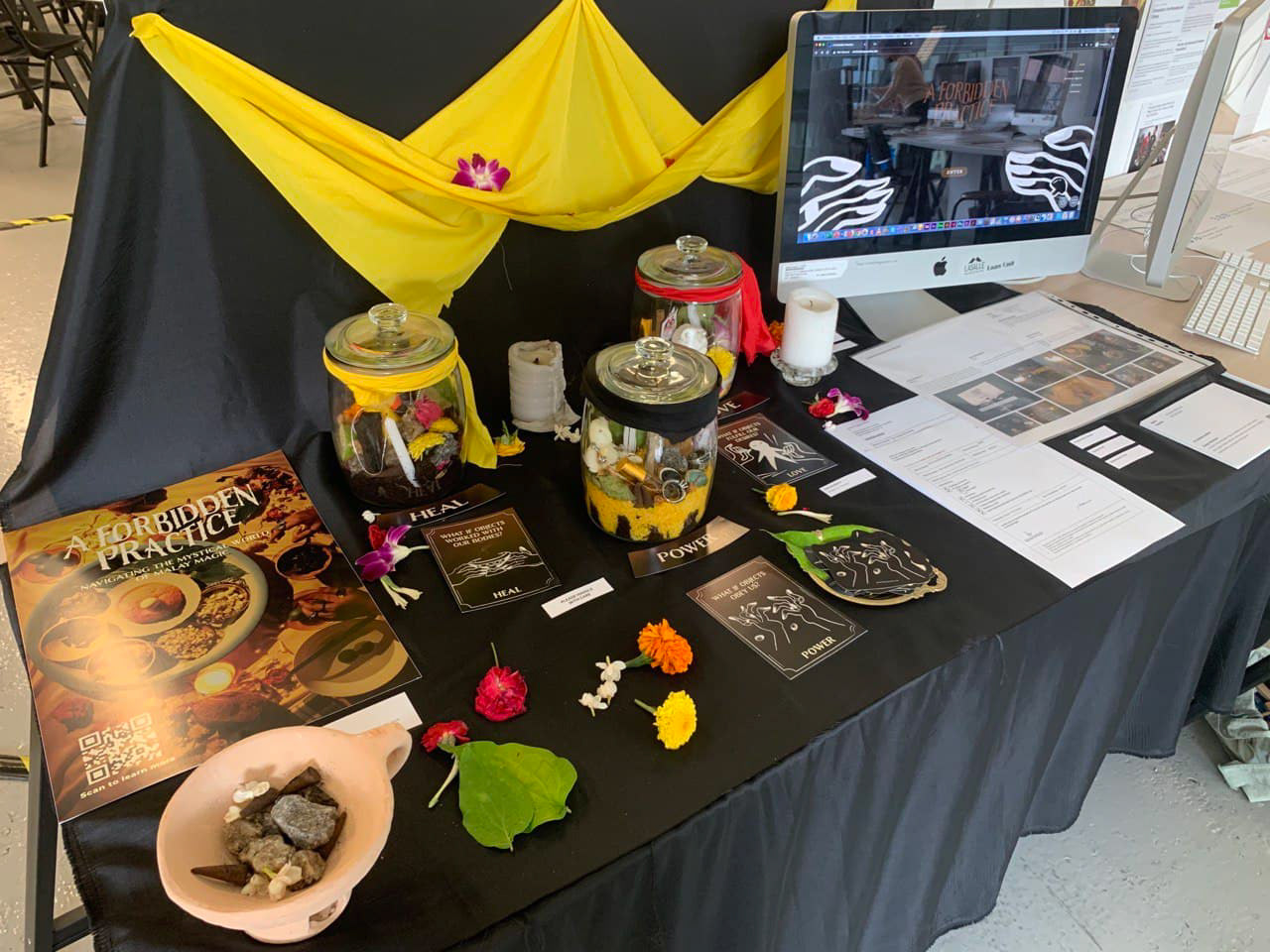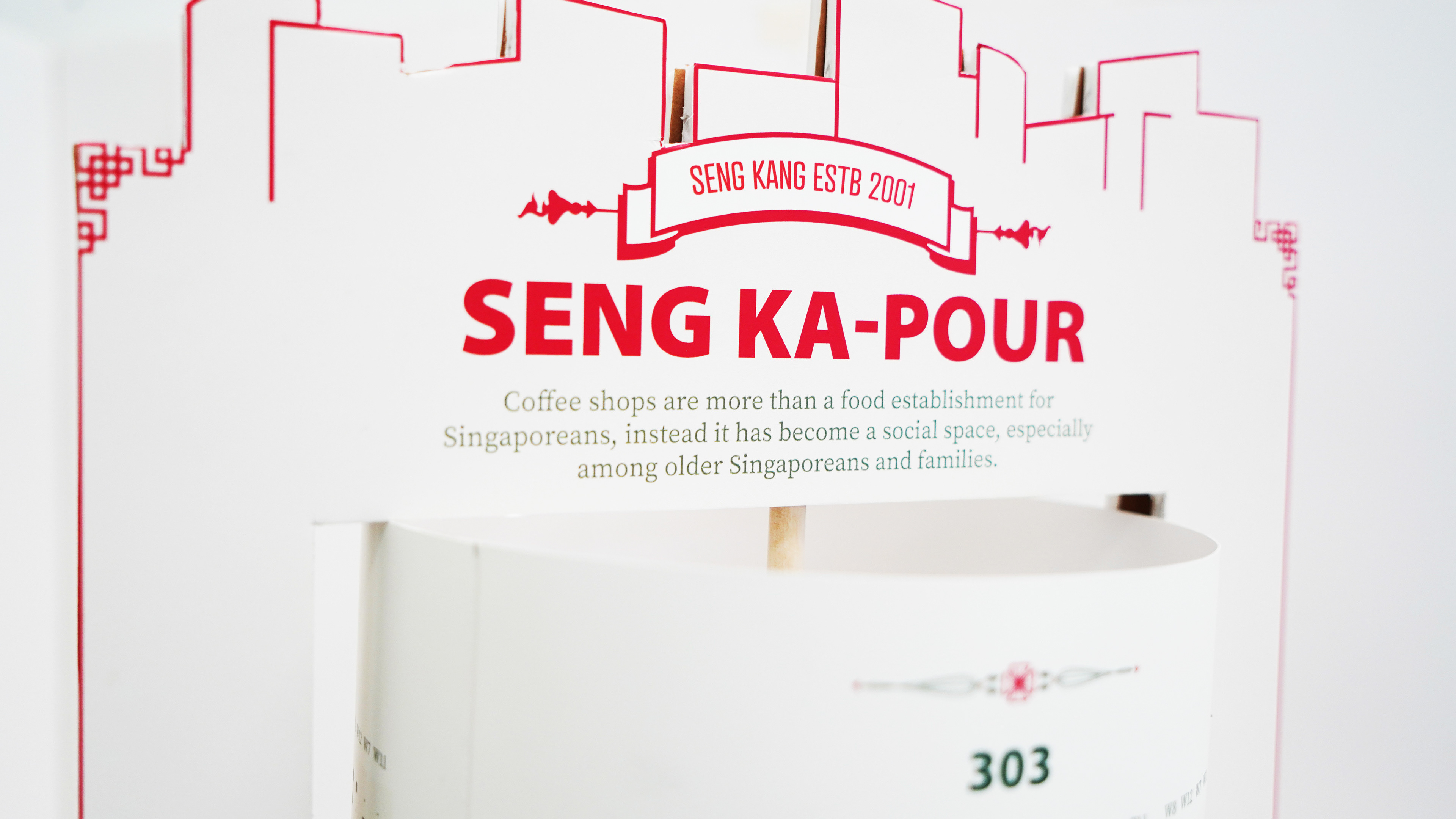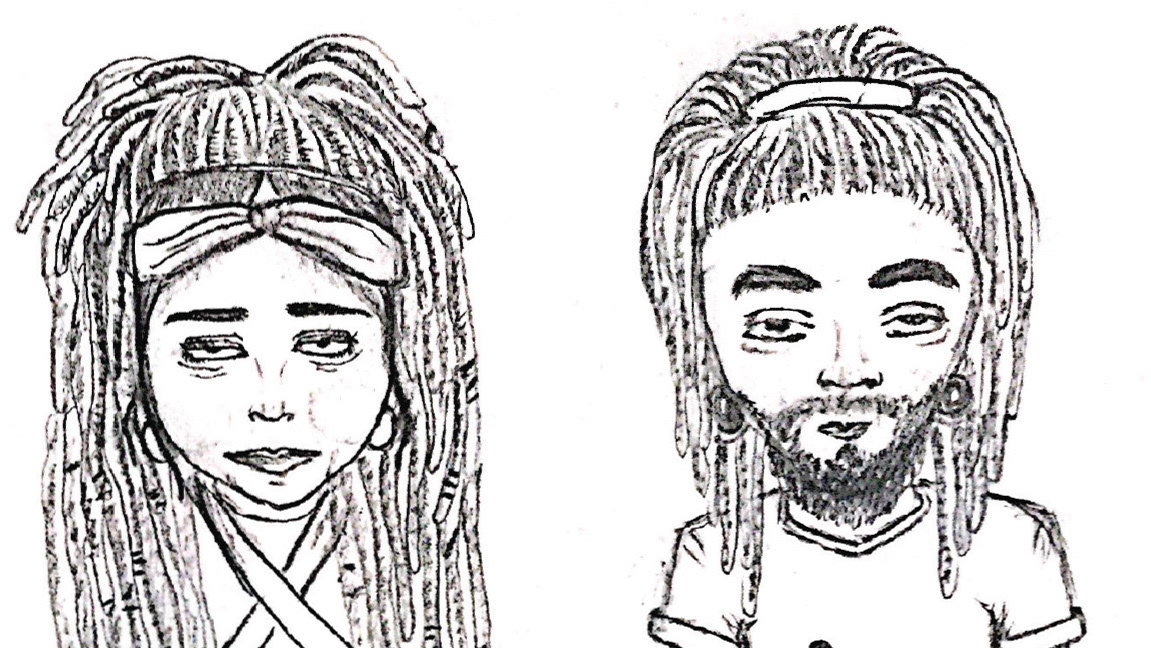A project that investigates magical artefacts that were used in ancient and modern Malay mysticism, while exploring the processes of meaning making within the occult beliefs of that period.
Website: www.aforbiddenpractice.site
Creative Process Journal: www.aforbiddenpractice.cargo.site
Website design | Videography | Set up design | Illustration
Website: www.aforbiddenpractice.site
Creative Process Journal: www.aforbiddenpractice.cargo.site
Website design | Videography | Set up design | Illustration
Context of project
Every culture has their own sets of beliefs and practices, be it mystical or religious. In the ancient Malay culture, people believed in spirits, objects and magical practitioners (Bomohs) . More than often, native Malays had once believed in Animism (Kasimin XVI). One may adopt multiple beliefs to either seek help, heal or to have an added advantage in their lives. Through these beliefs, mystical objects were utilized through these processes. Today, since the arrival of I slam has won the majority of the Malays in the Malay peninsula, mystical beliefs as such were also challenged by this factor ( XI). These beliefs were further opposed through modern times as technological and scientific advances prevail. Hence, it also challenges the believer in more than one way to believe. Furthermore, modern Malay has more accessibility with mystical objects.
Objective of project
The objective of this project is to educate the younger generations on historical Malay beliefs that were practiced in the past. It is also to shed l ight on legitimate views and perspectives of the Malay community towards an alternative belief system through an exploration of magical objects and ephemera used in these ancient practices. The main idea is to collate data and make a depository of information that has been collected through the research. It will be arranged into three broad categories, love, heal, and power. The research explores hidden narratives behind objects and meaning-making. Users will also learn about the culture of the mystic practices and the role of the bomoh/shaman.
Significant of project
Through inquiring about the Malay practices and magical beliefs, we get to see and compare items and objects that are often used in magical beliefs and practices. Sometimes these practices could be absurd or extreme now and through this research, an ethnographic approach will inform a deeper understanding on how Malay mysticism has changed over time and through social and political context. This can also open up the question of accessibility and modernity as more objects were utilised for modern situations. With that, we can look at how an object is given a certain meaning and how they are given power and agency.
Every culture has their own sets of beliefs and practices, be it mystical or religious. In the ancient Malay culture, people believed in spirits, objects and magical practitioners (Bomohs) . More than often, native Malays had once believed in Animism (Kasimin XVI). One may adopt multiple beliefs to either seek help, heal or to have an added advantage in their lives. Through these beliefs, mystical objects were utilized through these processes. Today, since the arrival of I slam has won the majority of the Malays in the Malay peninsula, mystical beliefs as such were also challenged by this factor ( XI). These beliefs were further opposed through modern times as technological and scientific advances prevail. Hence, it also challenges the believer in more than one way to believe. Furthermore, modern Malay has more accessibility with mystical objects.
Objective of project
The objective of this project is to educate the younger generations on historical Malay beliefs that were practiced in the past. It is also to shed l ight on legitimate views and perspectives of the Malay community towards an alternative belief system through an exploration of magical objects and ephemera used in these ancient practices. The main idea is to collate data and make a depository of information that has been collected through the research. It will be arranged into three broad categories, love, heal, and power. The research explores hidden narratives behind objects and meaning-making. Users will also learn about the culture of the mystic practices and the role of the bomoh/shaman.
Significant of project
Through inquiring about the Malay practices and magical beliefs, we get to see and compare items and objects that are often used in magical beliefs and practices. Sometimes these practices could be absurd or extreme now and through this research, an ethnographic approach will inform a deeper understanding on how Malay mysticism has changed over time and through social and political context. This can also open up the question of accessibility and modernity as more objects were utilised for modern situations. With that, we can look at how an object is given a certain meaning and how they are given power and agency.
Run through of the website

















